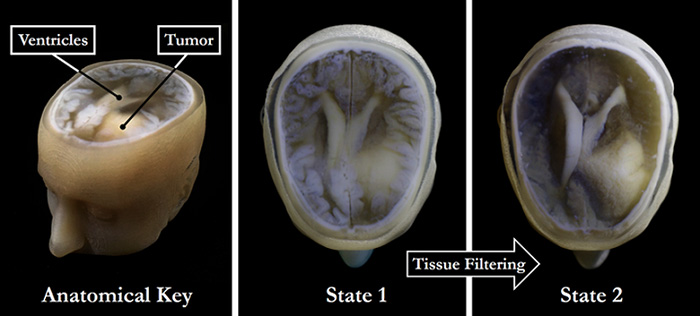
Doctors need MRI and CT scans to further evaluate, and diagnose, medical conditions. These scans produce high-resolution images in a series of slices which show the details of structures in a person’s body and can later be 3D printed into a detailed physical model.
Unfortunately, these images are so detailed that the part that needs to be 3D printed has to be isolated from the surrounding tissue, then converted into surface meshes. While a computer can quickly complete this in an automatic thresholding process, it can over- or under-exaggerate the object’s size, and also wash out important details.
Now, a new 3D printing technique by a collaborative research team allows these medical scans to be quickly converted into highly detailed, 3D printed models with ease – and at less cost.
In 2016, Steven Keating, PhD, had a brain tumor the size of a baseball removed while he was a graduate student in the MIT Media Lab’s Mediated Matter group. He wanted a better understanding of his diagnosis and treatment options, and to see what his brain looked like with the tumor, and started 3D printing his MRI and CT scans. Frustrated with how difficult, lengthy, and non-accurate the current methods were, he contacted some of the group’s collaborators, including members of the Wyss Institute at Harvard University.
The team’s new method is an accurate, quick way to convert complex images into an easily 3D printable format. It uses a digital file format called dithered bitmaps, where each pixel from a grayscale image is converted into black and white pixels; the density of the black ones defines the various shades of gray.
The researchers created models of Keating’s brain and tumor through bitmap-based 3D printing that preserved all of the gradations from the raw MRI data in high-resolution detail. Their method was also used to 3D print a variable stiffness, multimaterial model of a human heart valve.
The goal now is make this method more feasible for patient education and routine exams.
Weaver hopes that sometime within the next 5 years, the day could come when any patient that goes into a doctor’s office for a routine or non-routine CT or MRI scan will be able to get a 3D-printed model of their patient-specific data within a few days.
